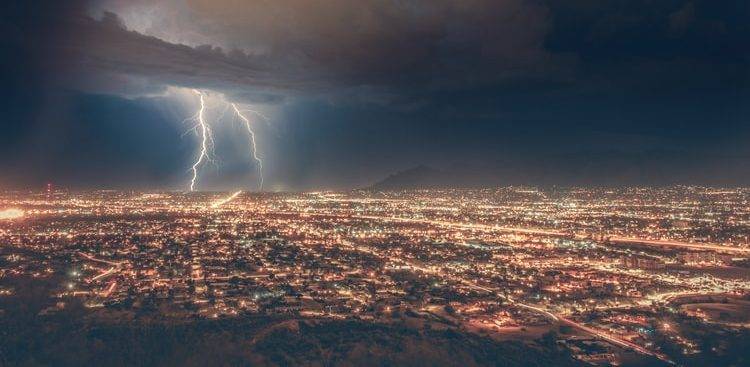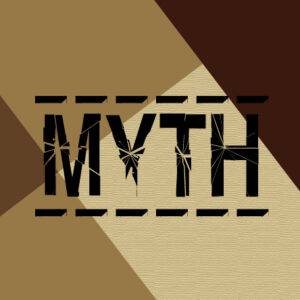In an electrical substation, Lightning Protection System is important for the smooth operation of electrical networks during lighting strikes.
Lightning strikes can cause severe damages due to the surge of extra voltage during a strike that is injected into a transformer. As a result, a strike and switching can cause substantial damage to equipment and outages in the transmission and distribution circuits. Even a strike near a substation can result in significant voltage fluctuation or breakdown. The high-capacity energy (voltage) released instantly during a thunderstorm can penetrate a building through Power, Data, and Telephone cables causing heavy damage to electronic equipment.
During a strike up to 120 million volts are extra infused into a transformer depending on the length and size. Other than power failure, it can cause an explosion, fire to its surroundings. The live lines connected to a blown transformer carrying thousands of volts can cause damage to lives.
A proper lightning protection system in electrical substations provides a low resistance path to ensure the correct operation of protection relays. These installations can mitigate the risk of damage to employees, surrounding dwellings and people, and equipment.
Current technological developments have found solutions to the problems caused by lightning and the voltage surge. These solutions also significantly reduce the overall cost of substation designs. These solutions are based on some standards.
Lightning Protection System Standards
Below mentioned standards are followed for the lightning protection system:
1.IEC 62305– Protection against Lightning: This international standard for Lightning Protection System has been adopted by the Bureau of Indian standards as IS IEC 62305, along with many other countries. This standard provides guidelines for the planning, erection, testing, and maintenance of lightning protection systems for building structures without any height limit. The standard is also accepted and implemented in the National Building Code-2016 that defines measures for planning, erection, testing, and maintenance of a lightning protection system.
The Risk Management section of IEC 62305 classifies four sources of Lightning:
i) Flashes to a structure
ii) Flashes near a structure
iii) Flashes to a service line
iv) Flashes near a service line
2.NFPA 780-Standardizes lightning protection systems installation procedures.
Elements of Substation in a Lightning Protection System
1. Surge Arresters: The substations use Lightning Arresters or surge arresters. They help limit the voltage surge during a strike and subsequent equipment damage or failure, explosion and prevent a service disruption. Lightning arresters are designed to protect different pieces of equipment like power poles and towers, power transformers, circuit breakers, bus structures, and steel super-structures from the damage of lightning strikes. Therefore, they are installed on different parts and pieces of equipment in a substation. The types of arresters used in substations are:
a. Low-voltage surge arrester:for Low-voltage distribution system, exchange of electrical appliances protector, low-voltage distribution transformer windings.
b. Distribution arrester: For 3 kV, 6 kV, 10 kV AC power distribution system to protect distribution transformers, cables, and power station equipment.
4.Lightning Masts:Lightning masts protect various installations (fixed and portable) from lightning damage. Unlike the arresters, they are not usually attached to an object to protect it; they are placed near an area for its overall protection.
5. Down Conductors: Down-leads or down-conductors are a part of the main conductor system. They channelize the lightning current from the roof-level system to the grounding system.
6. Earth Terminations: Earth-termination systems are used to disperse lightning currents. The earth terminations are directly connected to each down-conductor to get an overall low earth resistance.
LPS Design & Methodologies
The design of an LPS for substations is specific to the requirements of the substations and related cost considerations. However, the protection measures must be taken based on a thorough risk assessment.
An LPS has external and internal systems. The air terminal system of external LPS intercepts with lightning strikes. It diverts the lightning currents safely (via down-conductors) to the earth, further dispersing it under the earth surface. The internal LPS protects from the “internal sparking” by use of either ‘equipotential bonding’ or ‘separation distance’.
There are four classes of LPS which has different parameters based on the corresponding Lightning Protection Level (LPL) they provide.
The substation LPS designers generally use the ‘rolling sphere’ method to enhance the quality of the locations and configurations of lightning masts and shield wires. This method is used to avert direct lightning strikes to the already energized conductors, bus bars, electrical equipment, support structures, and buildings.
Rolling Sphere Method
The Rolling Sphere Method (RSM) is a technique for determining the zones for protection. In this method, a sphere is supposedly brought up and, rolled over the structure. The geometrical boundary of areas that are protected against direct lightning flashes can be determined using the RSM. All points of the structure that the sphere touches are exposed to direct lightning strikes and would need to be protected by air terminals.
Structural Protection
For structural protection, LPS is made of air terminals, overhead earth wires, down-conductors, equipotential bonding and earthing terminations. Structural weaknesses are caused by the intensified electrical field of the points and corners on the upper surfaces of structures, conductors, or bus bars. Therefore, interception points for lightning strikes are installed at the air terminals and earth wires.
Installation Rules
Some basic installation rules are discussed below:
Lightning Masts/Air Terminal
Lightning masts intercept and conduct lightning strikes. These consist of an air terminal that is mounted on a pole or a structure.
Lightning masts should firstly be placed to protect the most vulnerable parts of a structure (points and corners.)
More masts are to be added using the rolling sphere method. Alternatively, existing mast heights can be increased to make the rest of the structures strong by covering also the least vulnerable parts by the protective shield of the mast.
Air terminals are also used for protecting a sloped surface. In that case, they must be placed at the corners. One can install multiple air terminals based on the LPS design method.
Down-conductors
The down-conductors should be installed outside the building and avoid the proximity of electrical cables and gas.
The down-conductors may have a cable conductor, or qualified continuous steel framework of 3/16” thickness or more, or a combination of the two.
The down-conductors have direct connections to the earth. Therefore, they should have an air terminal attached to them.
Multiple air terminals can be used to protect a single structure and they must be connected with main conductors.
The spacing of the down-conductors is dependent on the level of protection and should not be more than 20 m when inserted into the earth’s surface. The insertion should use the shortest path to earth and be as straight as possible. Avoid sharp bends or elevations.
Whenever possible, the lightning rod connected to the ground must have at least two down-conductors placed on opposite sides.
Earth terminations
A buried earth grid or network should connect directly to each down-conductor. It should achieve a low overall earth resistance and, should be less than 10 Ω. All metallic structures at ground level should have equipotential bonding installed.
Thank you for reading the blog, Axis is a leading manufacturer and supplier of Electrical Components to over 80+ Countries. To get a quote or to talk to our industry expert visit our contact us section. You can also watch our videos by our experts – click here.
Read more about Earthing & Lightning Protection:
Surge Protection Devices (SPD)
Lightning Protection Zones and their Application to SPD Selection
How does a Lightning Arrester work?








